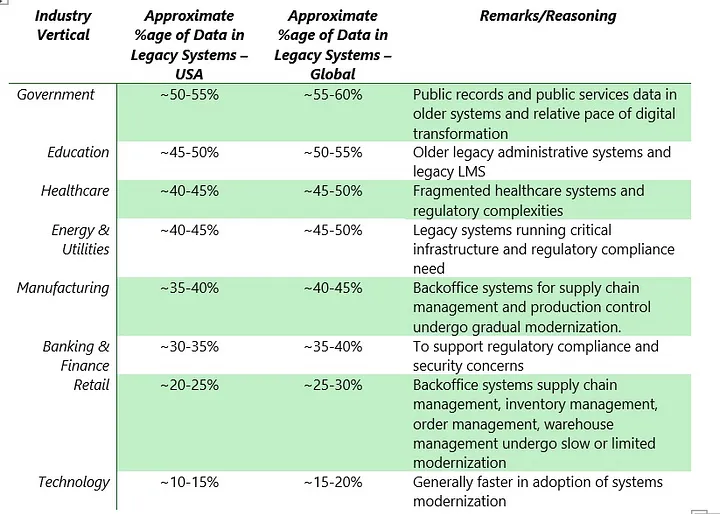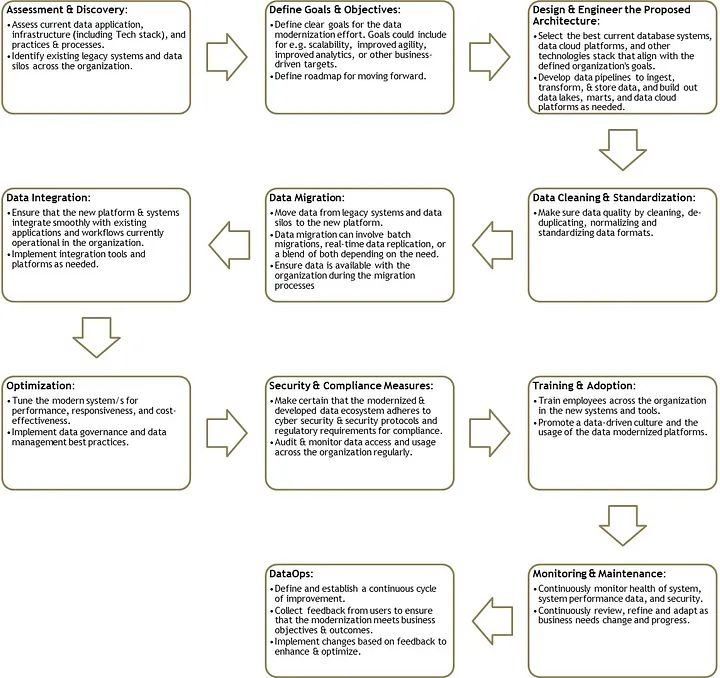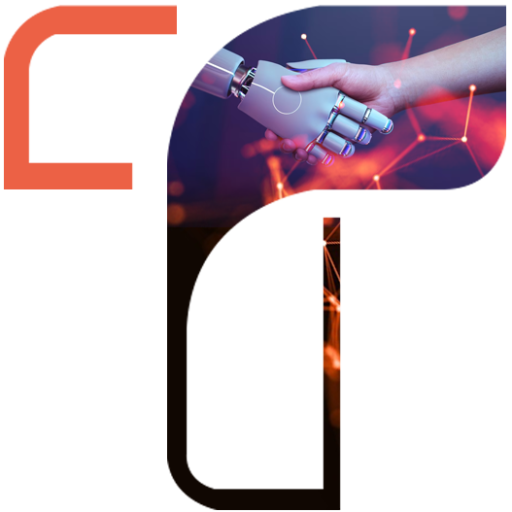For an organization existing Data is a critical asset that can be leveraged to improve operational efficiency and business outcomes that help delivering a competitive edge. In the era of fast-paced adoption of Machine Learning, Artificial Intelligence and Generative AI and in today’s digital age where data volume, type and velocity are increasing exponentially, the CXO’s have a task in hand to modernize their critical asset — “Data” sooner than later. Data modernization will help transform legacy data systems into scalable efficient platforms, architecture, and tools to unlock the full potential of organizations data.
How much data is stuck in legacy systems?
Having spent over 3 decades in the IT industry, in my opinion the approximate percentage of data in legacy systems (USA and Global) will be in the following range by Industry Vertical based on my experience and tapping industry reports consolidated by ChatGPT.

Economic Impact of Unutilized Legacy Data and Data Silos
The economic impact of unutilized legacy data and data in silos within an organization can be substantial impacting operational efficiency, opportunity cost, and strategic disadvantage. Key points explaining the economic consequences:
1. Increased Operational Costs
Maintaining data in legacy systems being unutilized requires significant financial costs and inefficiencies in data management. Organizations may find themselves allocating budgets to support outdated systems that do not contribute to strategic goals.
2. Reduced Employee Productivity
Retrieving and reconciling data that is locked in legacy systems and data silos across various platforms is forever time consuming and error-prone reducing overall productivity of employees. This may also impact decision making and project completion.
3. Missed Opportunity for Fostering Innovation
Data is a critical asset as stated earlier for driving insights, developing new services, launching new products, new market opportunities, and optimization operations. This in turn impacts competitive advantage/s that have been fostered using innovations.
4. Impaired Decision Making
Availability of data is important from the decisioning making for organizations. The quality of business decisions get directly impacted by availability and quality of data, lack of same impacting holistic view of the business operations, market conditions and customer needs.
5. Regulatory Compliance and Security Risks
Modern data management systems have advanced compliance and security measures tuned to today’s need that is often lacked by legacy systems. By neglecting this data, organization may inadvertently expose to heightened risks of data breaches, cyber theft, and regulatory compliance. These risks carry significant financial implications, legal implications, and reputational damage.
6. Slower adoption of AI & GEN AI
AI and GEN AI are significant from organizations perspective to build a competitive edge and adoption of digital transformation. AI is not just code or algorithms but essentially includes data. AI = Code + Data, requiring the organizations to modernize enterprise data from legacy systems and bringing together data from data silos.
7. Monetization (if exists)
Data Monetization opportunities are directly proportional to availability and quality of data in the Digital economy. This makes it imperative that data is not lying is legacy systems and silos that impact availability and quality of data.
8. Opportunity Cost
Resources that are spent on legacy systems with unutilized data could be invested in more strategic initiatives that drive organizations growth.
What are Data Modernization Use-Cases?
Data modernization journey at high level will support variety of use-cases under following broad categories:
- Data for ML/AI model training
- GEN AI & enhancing private LLMs and LVMs.
- Deeper analytics and insights
- Data driven decision making culture.
- Security and compliance
- Improved customer experience
- Monetization
- Fostering innovation
We want to Modernize Data, but don’t know how to?
Data modernization initiative is a complex task that requires meticulous planning and execution. Following these steps and considerations will help ensure that the modernization process adds value to your organization and positions you to take advantage of new opportunities in the ever-evolving digital landscape.

Start the Journey ….
Please connect with me at hiren@trushiftdigital.com to embark on Data Modernization journey.
Based on a proven Data Modernization methodology, our expert consultants will begin with evaluating your current Data Infrastructure and defining the Data Modernization Roadmap.
